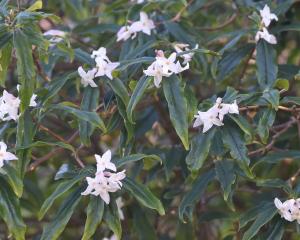

Members of the New Zealand Plant Conservation Network (NZPCN) stuck to their knitting, so to speak, and chose a plant, the pigmy button daisy, Leptinella nana.
NZPCN council member and botanist John Barkla said: "This is a big win for a tiny plant that only exists in a few areas that add up to [an area] smaller than most people’s living rooms."
We have about 20 native Leptinella species, many endangered in the wild, including L. rotundata, which makes an attractive ground cover. Not threatened is L. squalida and the Platts Black form is an increasingly familiar garden ground cover. Leptinellas from alpine regions tend to require loving care and are less popular with gardeners, but L. nana does have potential as a garden plant, which may be its salvation, given its rarity in nature.
Runner-up in the top 10 was kaka beak (Clianthus puniceus), now found wild only as a single pink-flowered plant in Northland, while the white form is extinct, surviving only as a garden shrub.

A rare North Island bearded orchid, Calochilus herbaceous, came seventh, beating horoeka or lancewood (Pseudopanax crassifolius) by a single vote. The latter is a familiar sight and one of the best trees, native or exotic, for small gardens, thanks to its slim build and changing form from downward drooping juvenile leaves to a round-headed adult 5m or so tall. The toothed lancewood (P. ferox) doesn’t grow quite as tall, has somewhat variable leaf colour and will tolerate drier conditions.

Denis Hughes, of Blue Mountain Nurseries in Tapanui, bred Sweet Hart with a cross of C. cartmanii, another native species. This is a smaller plant that can be grown as a climber or allowed to sprawl in a rockery, where the evergreen leaves look good even when the spring flowers have gone.

Nor did I ever see a puriri moth, New Zealand’s largest moth, with a wingspan of 150mm and stunning green wings. I kept a close eye on holes in the trunk, but the tree was close to a busy road so probably kept this beauty away.

This year’s NZPCN favourite plants list is interesting and varied and reflects the organisation’s vision that "the rich, diverse and unique native plant life of New Zealand is recognised, cherished and restored".











